Samsung’s renewed efforts in laptop design seem to be paying off. I’ve been a big fan of its recent Galaxy Book laptops and even use the Book Flex as my daily driver. The company has been able to differentiate its PCs by focusing on its strengths, like great displays and the S Pen, while nailing basics like powerful performance, long lasting batteries and sleek designs. But most people may not immediately think of Samsung when shopping for a laptop, which might be why it’s hosting an entire event dedicated to launching its latest notebooks.
“We think now is a really good time, not only because of the relevance of PCs, but how we’ve thought about our PC devices and how they fit into the overall ecosystem,” Danielle Moten, senior product manager for Samsung Electronics America, told Engadget. “We have a unique offering and a unique voice in the PC market, in particular because we have this heritage of excellent display quality, display technology.”
All about the screens
Displays are the main highlight of Samsung’s new Galaxy Book Pro series, which are a pair of clamshell and convertible laptops in two sizes each. All four devices feature the company’s AMOLED panels (the Pro 360s use Super AMOLED touchscreens) with Full HD resolutions and having seen them in person at a recent (socially distanced) hands-on appointment in New York, I can say they’re certainly rich and colorful. The 4K UHD videos I loaded were vivid and smooth, though the panels did look dim under direct sunlight, even at max brightness.
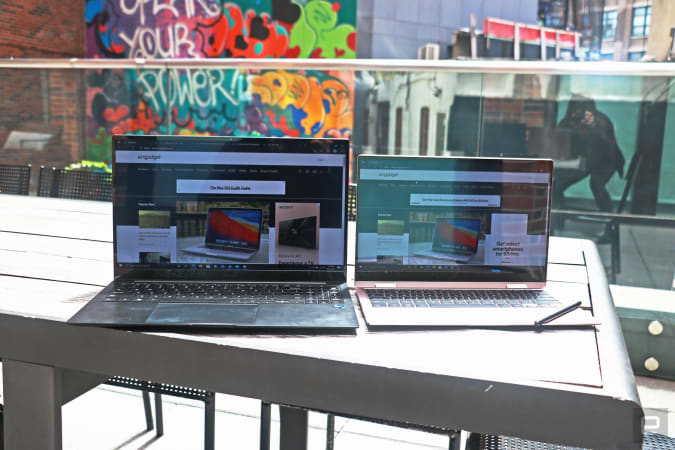
But not everyone wants their screens to be saturated and warm, especially if you’re a photo editor whose priority is color accuracy. To accommodate such users, Samsung built different color profiles into the Book Pros: Vivid, Natural, Photo Editing and Movie. These each switch to the AMOLED native, sRGB, Adobe RGB and DCI-P3 color spectrums respectively. You can pick the one you want or set it to Auto to let Samsung’s “intelligent color engine” do the switching based on what you’re doing.
I did notice a slight change in colors when I jumped between these profiles, with Photo Editing and Natural both looking a little less warm and red than the other two. I haven’t spent enough time with the devices to know how well Auto works, though.
Compared to the Book Flex’s QLED panel, the Book Pro’s screens do look more vibrant. AMOLEDs deliver brighter, more accurate colors than QLEDs thanks to individual light emitting diodes, and offer a greater contrast ratio of a million to one. Of course, that means the Book Pros are likely to consume more power, and Moten told Engadget that the company has done “a number of things to ensure that battery life is optimized.”
Gallery: Samsung Galaxy Book Pro hands on photos
Power and battery
These include offering four modes in Samsung Settings that let the system manage things like performance, temperature, fan noise and battery life depending on your priorities. Maximum performance mode, for example, will let the 11th-gen Intel Core i5 or i7 processors run at the clock speed they need with no limits. Optimized mode balances performance, thermals and battery life, while silent mode will “save battery power by reducing your computer’s fan speed and performance” instead of focusing on a decibel level for some reason. You can also go for No Fan mode to stop them altogether.
Samsung says the Book Pros can last up to 17 hours, and when you do run out of juice, the new 65-watt charging via USB C should get you eight hours in 30 minutes. The company said its new compact charger is approximately 52 percent smaller and 33 percent lighter than before. We’ll of course have to test these claims out for ourselves when we get a review unit, but one thing I can already confirm is that the Book Pro’s power brick is indeed much smaller than older models.
Privacy screen and software
Samsung also added a new feature that sounds similar to something we’ve seen in HP’s laptops: A built-in privacy filter. With a keyboard shortcut, you can enable what the company calls “Secret Screen,” which will “render your screen unreadable from side angles without diminishing quality.” When I checked this out though, I realized it’s actually a software feature that adjusts the opacity or brightness of select apps. That’s different from HP’s system, which has a physical privacy filter in the panel itself that you can activate.
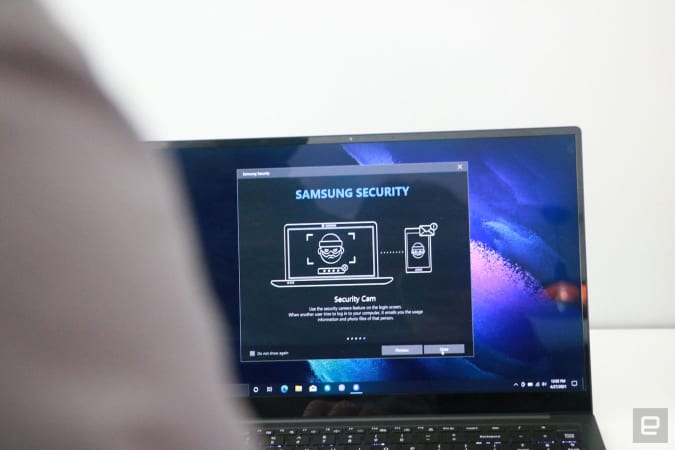
Samsung’s method works at a software level and makes the specific window you’re working on more transparent or dark. It only works with some apps, and the company’s own Security app where I was adjusting the settings wasn’t supported. I pulled up Engadget on Edge and switched between “Dark Screen” or “Opacity” modes and honestly… I couldn’t help laughing. Look, kudos to Samsung for trying to innovate but imagine trying to type into an almost-transparent Google Doc and you’ve basically got the Secret Screen’s opacity mode down. As for the Dark mode — it’s easier to just use the keyboard shortcut to dim your screen altogether.
The Galaxy Book Pros do offer a suite of other privacy-minded features that are more useful, though. A dedicated keyboard shortcut triggers a mode called Block Recording that can disable your webcam and microphone whenever you want to prevent snooping (or don’t look presentable enough for your Zoom meetings). If you share your laptop with other people and don’t want them discovering sensitive files you might have saved, there’s also a password-protected privacy folder that’s hidden from other users. Plus, if you leave your Book Pro unattended in a public or shared space one day and someone tries to log in, the laptop can be set up to take a photo and email it to you.
Super thin and light
But AMOLEDs and privacy features aren’t the only things Samsung is highlighting on the Galaxy Book Pro series. These are also the company’s thinnest and lightest laptops ever, according to director of product marketing Hassan Anjun. At 11.2mm or 0.44 inches, the 13-inch Book Pro is also lighter and thinner than the new Dell XPS 13 and HP Spectre x360 13, which measure 0.58 and 0.67 inches respectively. Samsung’s new 13-inch clamshell is also the lightest of the lot, weighing 870 grams (1.91 pounds) compared to the 2.64-pound XPS and the 2.8-pound Spectre.
Gallery: Samsung Galaxy Book Pro 360 hands on photos
I was so surprised when I picked up the 15-inch Book Pro for the first time that I actually exclaimed “Oh my God.” At 2.3 pounds, it’s significantly lighter than the 15-inch Surface Laptop 4, the MacBook Pro 15 and the Dell XPS 15. Despite its lack of heft, the Book Pro didn’t exhibit much flex and from my experience felt more premium than the LG Gram, which felt more hollow. Meanwhile, the 13-inch Book Pro 360 felt more dense (to be expected since it’s a smaller machine), but was still impressively thin and light.
Connectivity, keyboard and more
Despite its dainty size, the 13-inch Book Pro 360 also manages to house a 5G radio, making it Samsung’s first 5G PC. Samsung told Engadget it will have more to share on 5G support (whether sub-6 or mmWave, for example) in the second half of the year and that WiFi models will launch first.
The other three in the series only come with WiFi, though outside the US the 13-inch Pro 360 offers LTE connectivity. Still, all four machines can support WiFi 6E when those routers become more widely available.
Something that used to be sacrificed in the pursuit of thin and light laptops is a good keyboard. But the Galaxy Book Pros have generously sized keys with a decent amount of travel. The 15-inch Book Pro even had enough room to squeeze in a numpad, as well as a huge trackpad. Though I’d prefer more travel, the buttons themselves were responsive and typing on them was comfortable. Samsung said the keyboard here is quieter, too, though it’s hard to tell from a short hands-on.
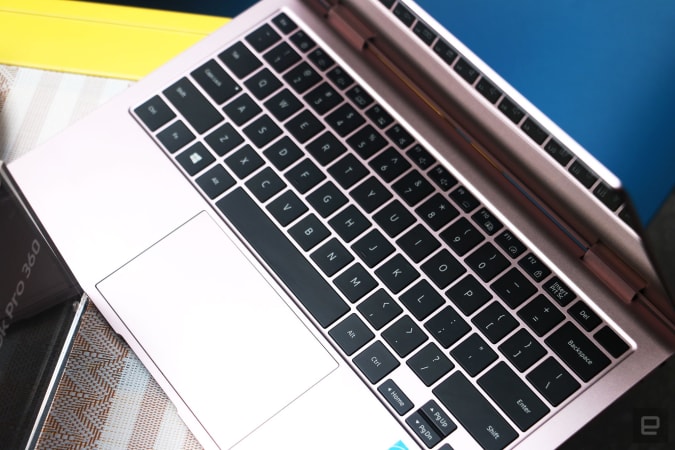
There are plenty of new features in the Galaxy Book Pro series that we didn’t get to test, including the upgraded microphones that Samsung said uses the same technology as its Galaxy Buds Pro. It will supposedly filter out unwanted background noise to make you easier to hear in meetings.
One of Samsung’s strengths is its ability to integrate products from its massive portfolio, and the Book Pros feature software that helps users manage multiple devices more easily. For one, these are the company’s first laptops to offer its Smart Switch that lets you transfer data from an old device, even if it’s not been backed up to the cloud. You can also use Second Screen to convert your Galaxy Tab S7 into an external monitor, while Link To Windows will let you use up to five mobile apps at once on your PC.
Samsung also brought the updated version of its Notes app to the Book Pro series, so you can use new features like PDF annotations and voice recordings on your laptop. The Book Pro 360 comes with an upgraded S Pen that has a thicker, comfortable grip, too. I scrawled some notes with the new stylus and though I can’t tell the difference from the older model, I certainly found it smooth and responsive. I still prefer the Book Flex’s S Pen, though, which has its own slot on the laptop. The new S Pen is magnetic and can attach to the Book Pro, which doesn’t have a housing for it.
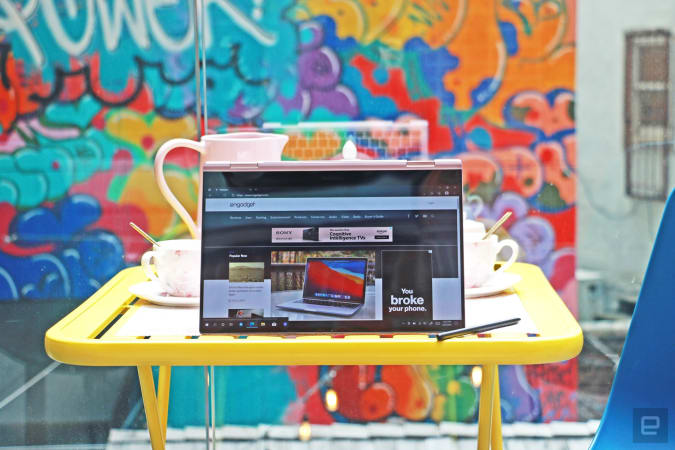
Those who prefer a QLED laptop can still opt for the Book Flex series, which Moten said Samsung will continue to sell. If the thought of a super thin and light PC with an AMOLED screen has won you over, you can already pre-order the Galaxy Book Pro and Pro 360 today, starting at $999 and $1,199 respectively. You can get the Pro in blue, silver or gold, while the Pro 360 comes in bronze or blue. They’ll be widely available on May 14th, so if you can, you should wait a little longer for our full review before buying one.

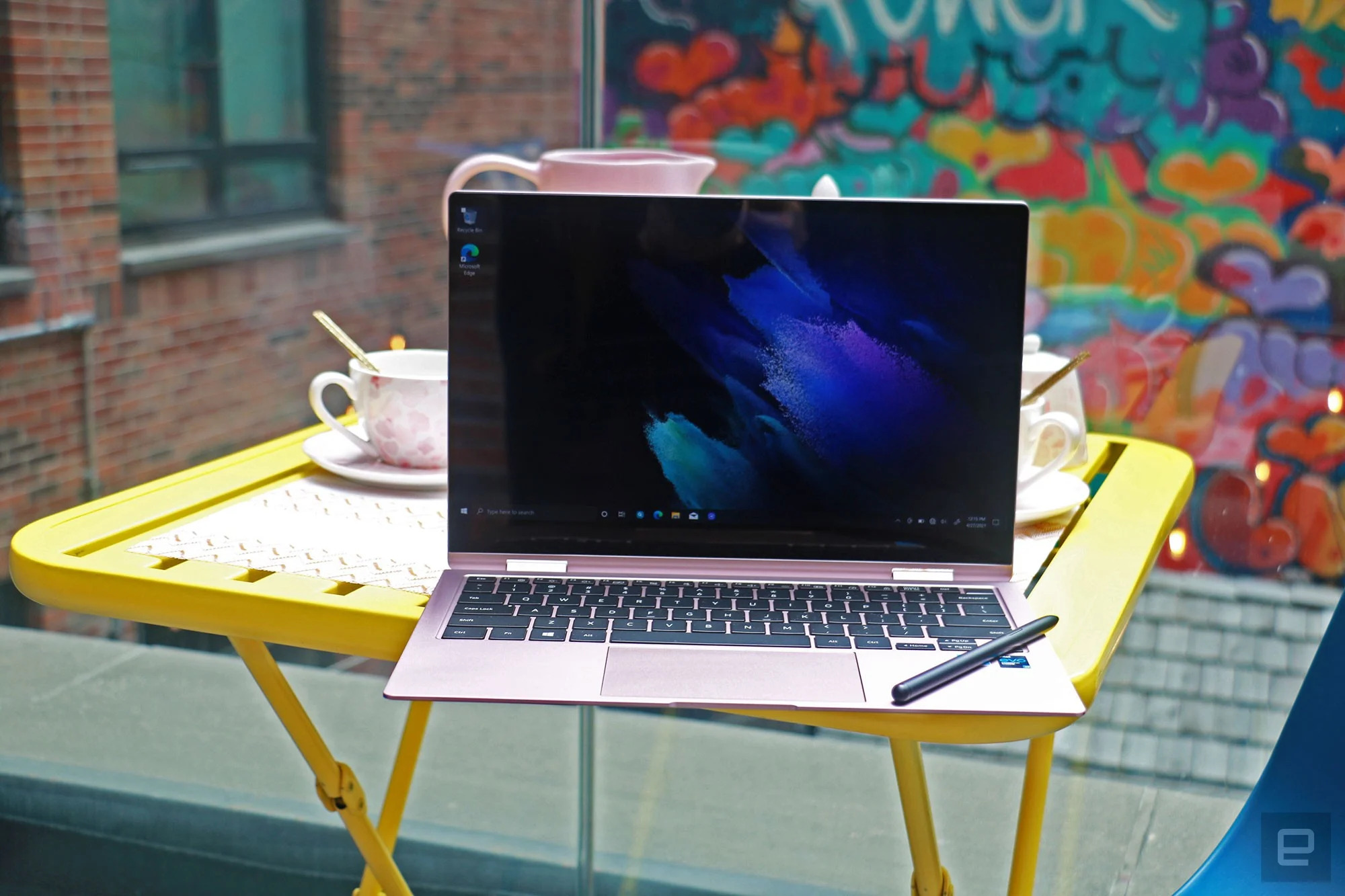
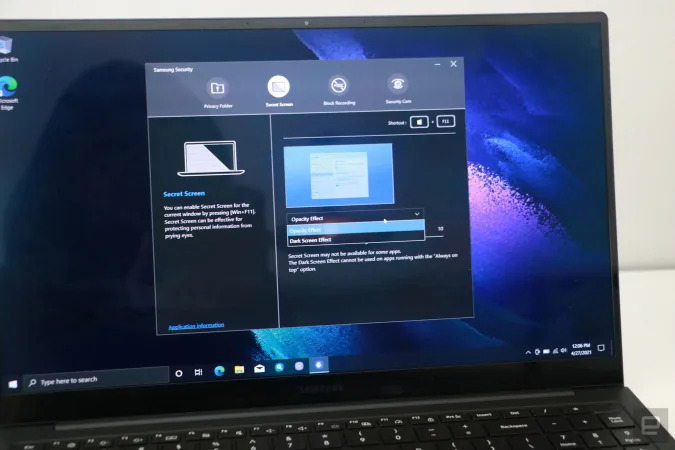
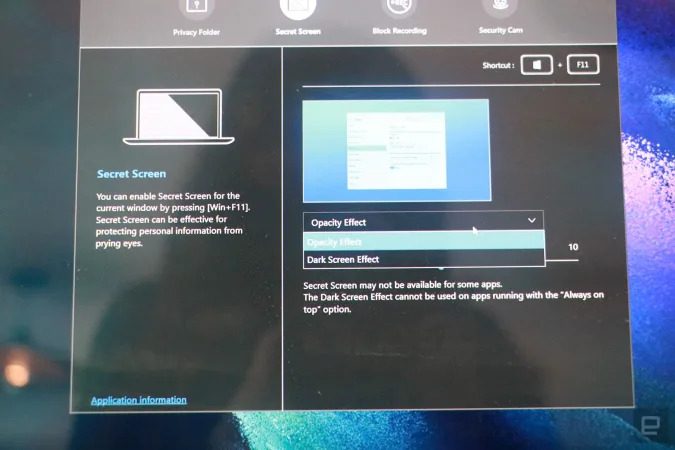
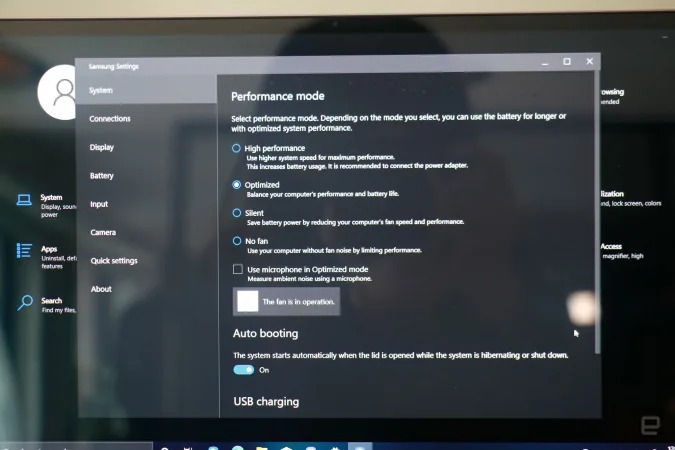
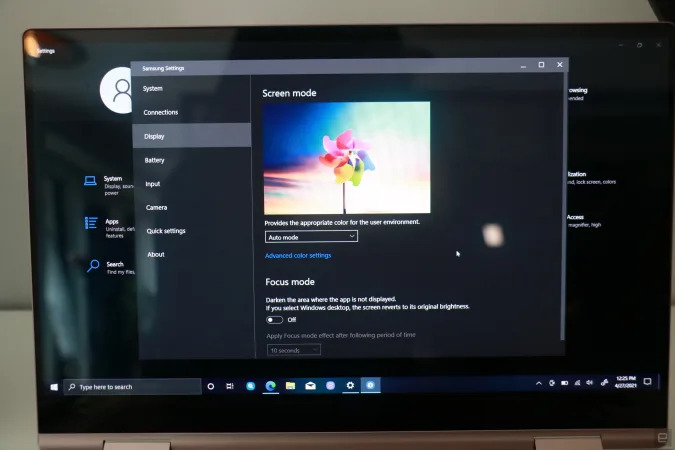
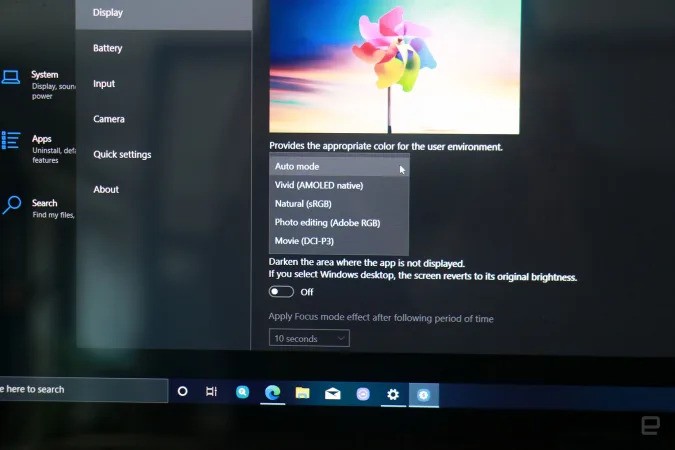
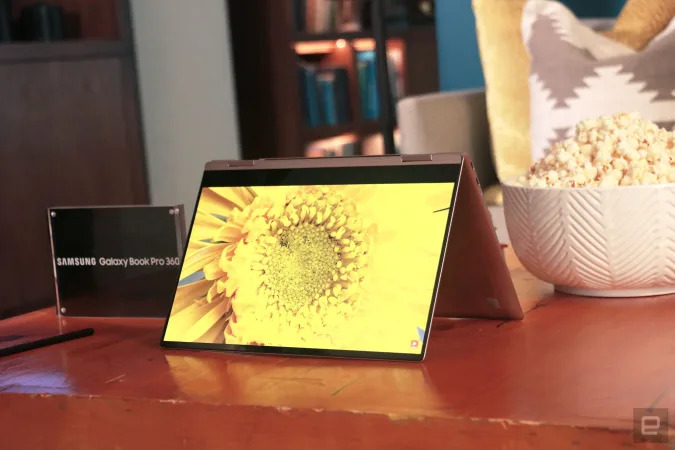
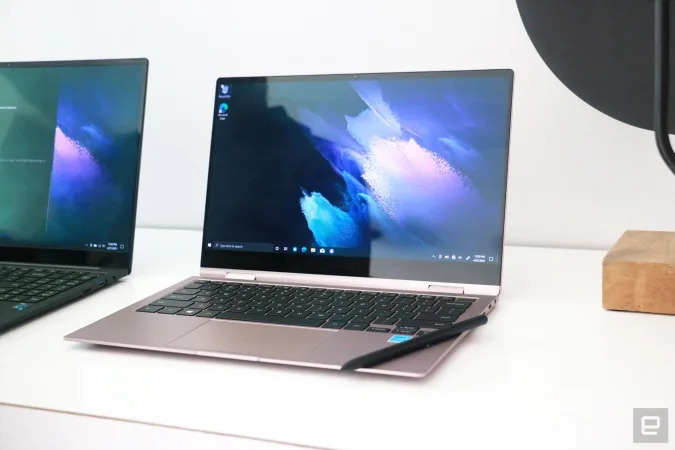
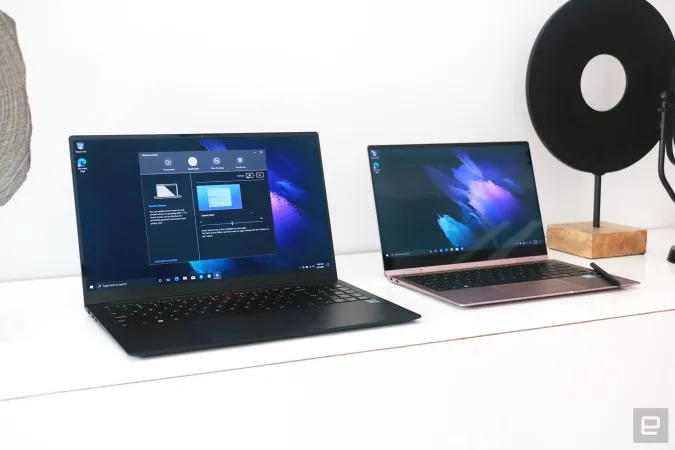
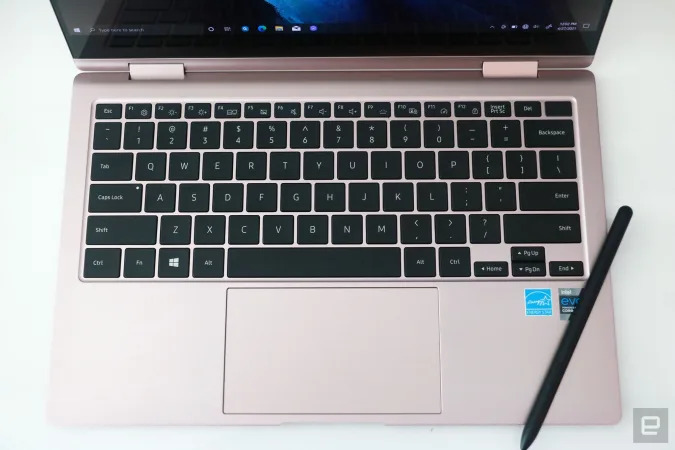
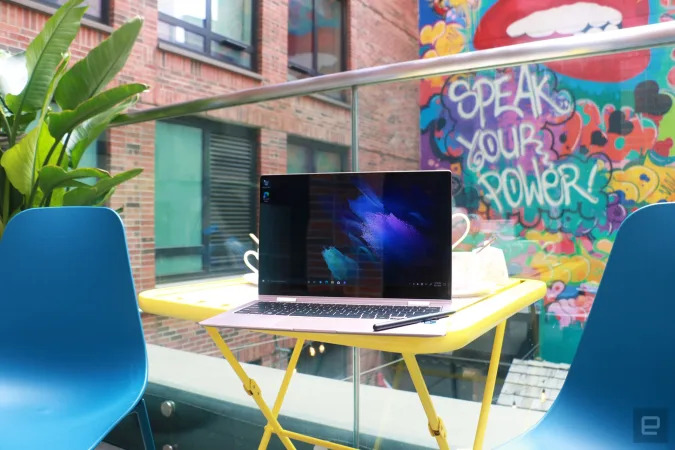
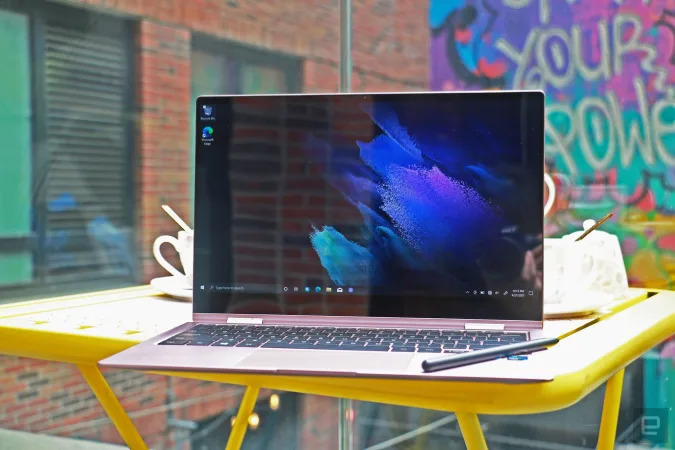
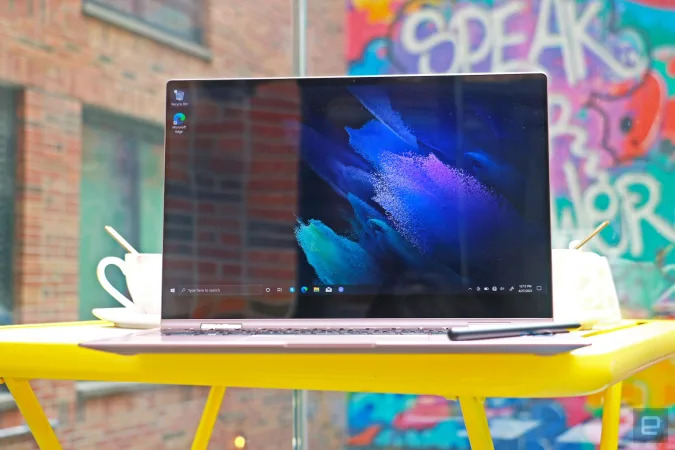


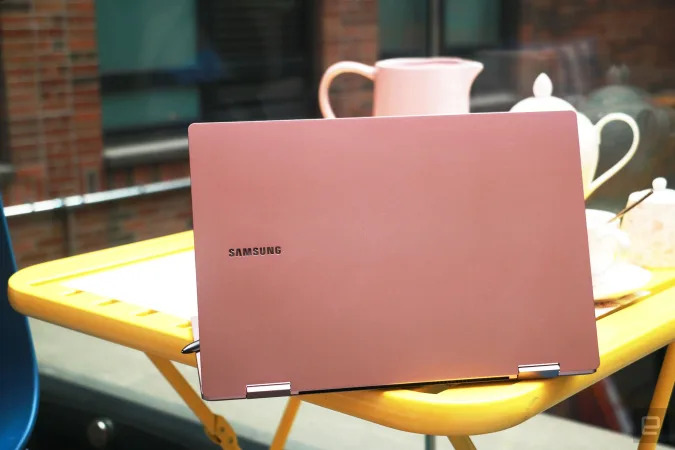

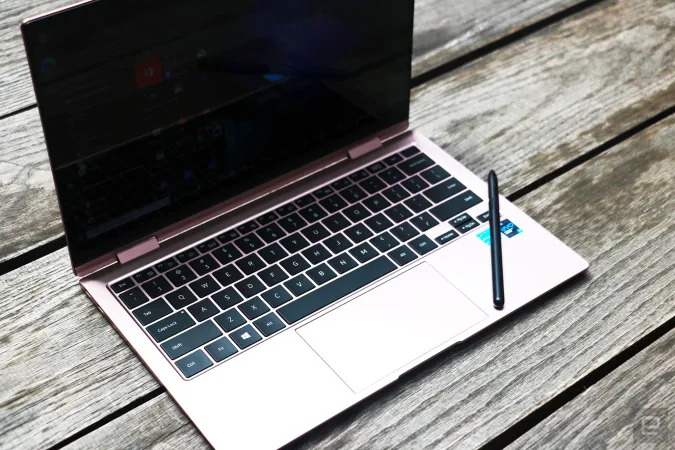


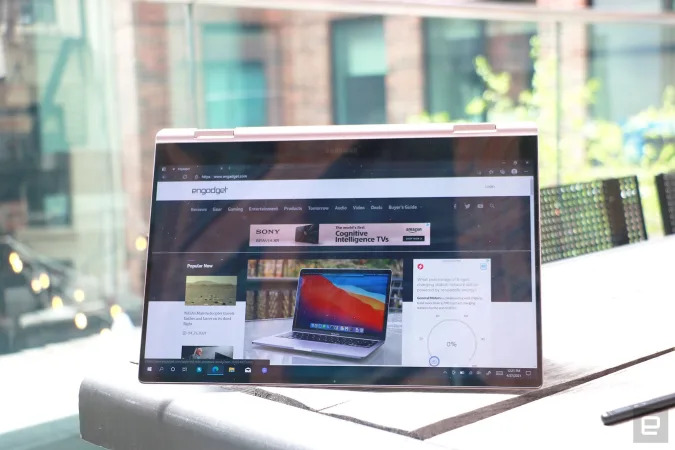
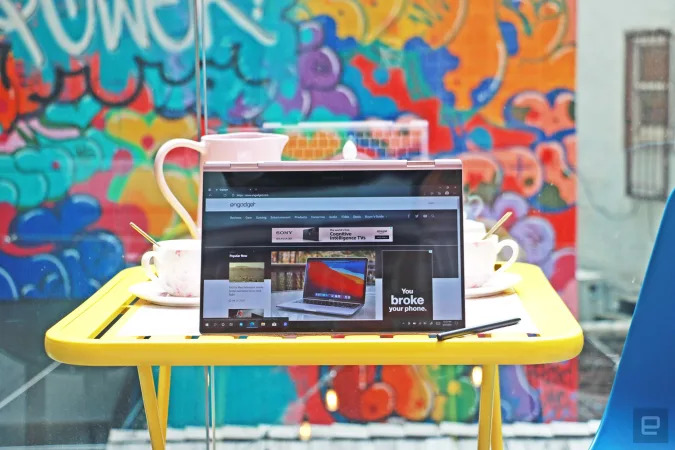

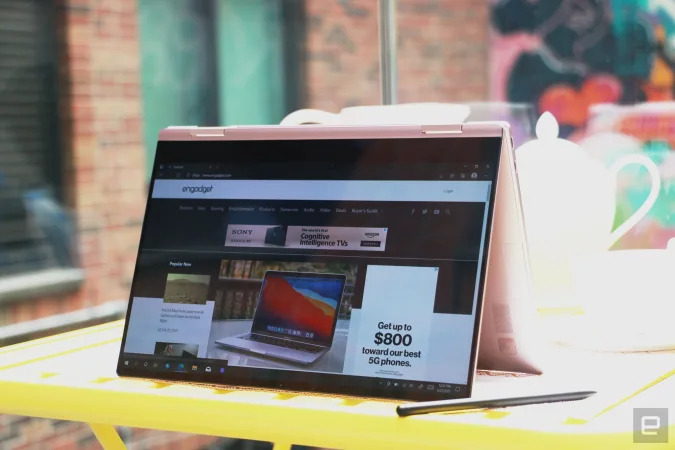
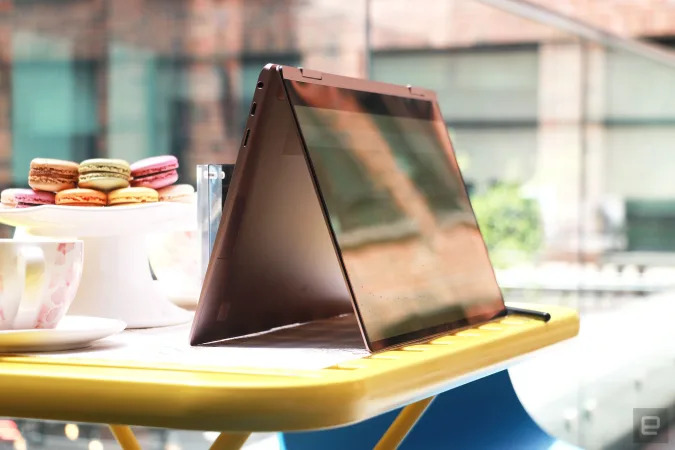
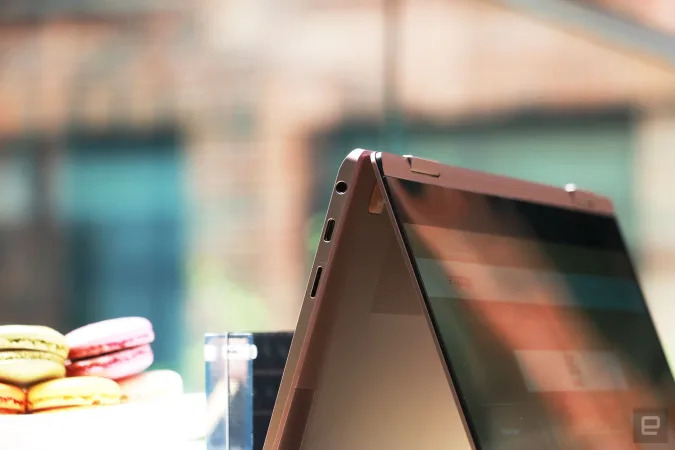
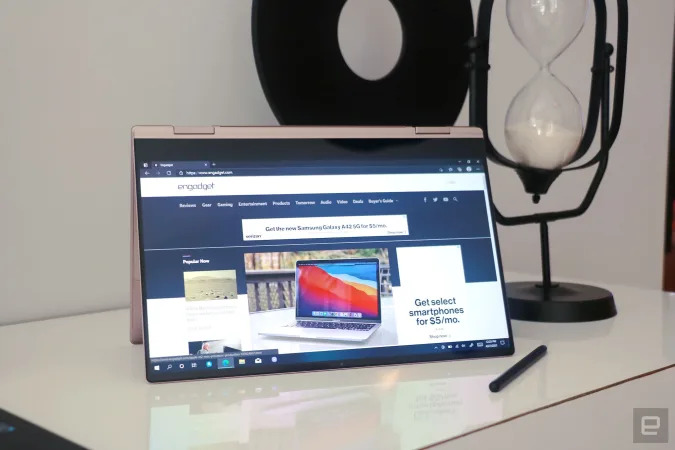
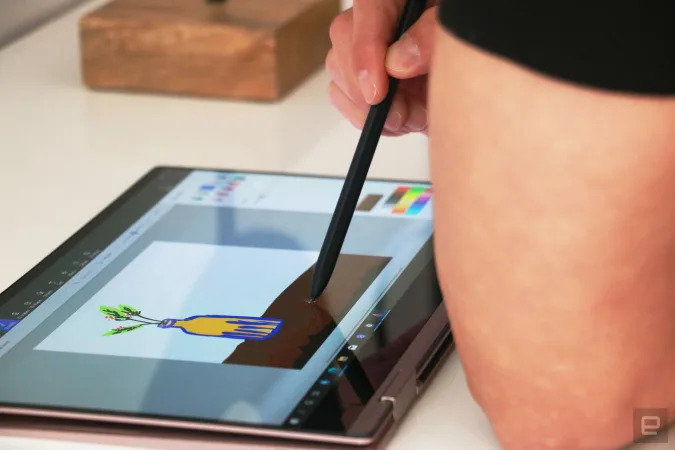
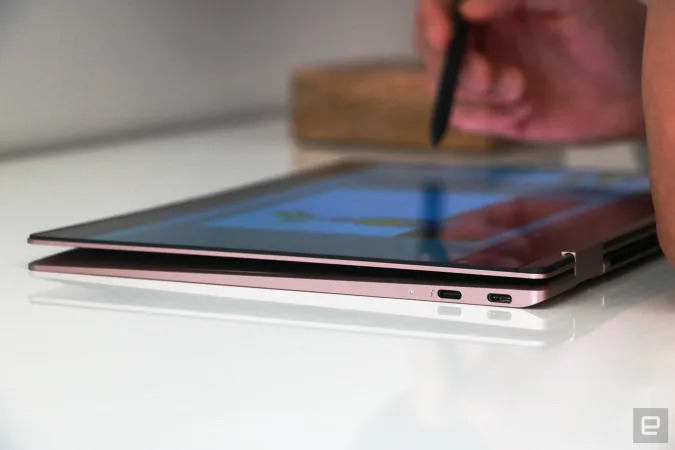
Post a Comment